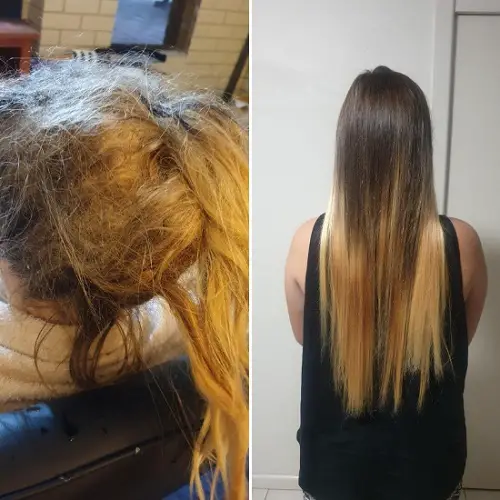When you ask about “hair mats/matting,” it generally refers to tangled masses of hair that have become densely knotted—forming clumps that resist combs or brushes.
Let’s explore:
Table of Contents
1. Hair Matting (Knotted Hair)
What Is Matting Hair?
- Severe tangling where hair strands, both shed and attached, twist and bind into dense clumps.
- Feels stiff, rough, and often resembles a “bird’s nest” or felted mass.
Causes of Hair Mats or Matts
- Hair type & length: Long, curly, coily, or dry hair tangles more easily.
- Neglect: Skipping washes, skipping detangling, harsh rubbing or drying, friction (e.g. pillow rub), hair extensions/weaves.
- Medical issues: In rare cases it can stem from scalp infections, lice, dermatitis, or acute conditions like plica polonica.
How to Treat Hair Mat or Matt
- Patience & moisture: Apply conditioner, hair oil, or water to soften tangles.
- Finger detangling first, working through gently.
- Use wide-tooth comb or tail-end pin-curler comb to ease through softened hair.
- Cutting last resort: If mats are rock-hard or pulling hurts, trimming may be safest.
Prevention of Mats Hair
- Regular washing and conditioning
- Nighttime protection: braids, satin caps, pillowcases
- Keep hair moisturized and regularly detangled, especially for longer or textured hair
2. Hair Mats (Environmental Tool)
Interestingly, the term also refers to mats made from human or animal hair fibers, crafted via felting to serve various eco-friendly functions:
Oil spill cleanup
- Hair mats absorb roughly five times their weight in oil, making them valuable for cleaning spills, storm drains, and bilges.
- Developed by Matter of Trust since 2000, inspired by hairstylist Phil McCrory during the Exxon Valdez spill.
- Used in major spills and urban runoff prevention; kits placed under vehicles and drains.
Soil, Erosion Control & Gardening
- Used as mulch, retaining water, slowly releasing nitrogen into soil, suppressing evaporation, deterring pests.
- Proven in California, Chile, and elsewhere for storm erosion, wildfire recovery, and reducing irrigation needs.
Lifecycle
- Biodegradable, compostable (worms or fungi compost).
- Made through local collection and felting, with programs supported by nonprofits and community hubs.
Quick Comparison
| Term | Description | Purpose |
|---|---|---|
| Hair matting | Tangled hair on the scalp | Unwanted, affects hygiene & appearance |
| Hair mats | Felted mats of cut hair | Environmental cleanup, gardening, erosion control |
Summary
- Hair matting refers to troublesome tangles that need gentle care or, in extreme cases, cutting to remove.
- Hair mats are an innovative eco-solution: sustainable products made from repurposed hair, helping clean oil spills, retain soil moisture, and support plant growth.
Hair matting refers to the formation of tightly tangled clusters of hair that can become difficult to separate.
This condition can range from mild tangling to severe matting, where the hair forms dense, impenetrable clumps.
Causes of Hair Matting/Mat Hair
Several factors contribute to hair matting:
- Hair Type and Texture: Curly, coily, or long hair is more prone to matting due to its structure, which makes strands more likely to intertwine.
- Dryness and Damage: Dry or damaged hair, often resulting from harsh shampoos, chemical treatments, or excessive heat styling, can lead to raised cuticles, making hair more susceptible to tangling.
- Improper Hair Care: Neglecting regular brushing or detangling, especially after washing, can cause loose hairs to intertwine and form mats.
- Sleeping Habits: Sleeping with loose hair, particularly on cotton pillowcases, increases friction, leading to tangles and matting.

Photo credits: Melbourne Detangling